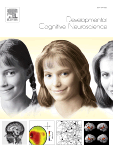 Highlights
Highlights
- Changes in the structure and function of the adolescent brain are placed in developmental context.
- Theories are challenged that posit adolescent imbalance between cognitive control versus sensation-seeking drives.
- Distinction is made between three forms of risky decision making, only one of which characterizes imbalance and only may apply to a subset of youth.
- An alternative Life-Span Wisdom Model highlights the adaptive characteristics of adolescent exploration and brain development especially in preparation for later life challenges.
Abstract
Recent neuroscience models of adolescent brain development attribute the morbidity and mortality of this period to structural and functional imbalances between more fully developed limbic regions that subserve reward and emotion as opposed to those that enable cognitive control. We challenge this interpretation of adolescent development by distinguishing risk-taking that peaks during adolescence (sensation seeking and impulsive action) from risk taking that declines monotonically from childhood to adulthood (impulsive choice and other decisions under known risk). Sensation seeking is primarily motivated by exploration of the environment under ambiguous risk contexts, while impulsive action, which is likely to be maladaptive, is more characteristic of a subset of youth with weak control over limbic motivation. Risk taking that declines monotonically from childhood to adulthood occurs primarily under conditions of known risks and reflects increases in executive function as well as aversion to risk based on increases in gist-based reasoning. We propose an alternative Life-span Wisdom Model that highlights the importance of experience gained through exploration during adolescence. We propose, therefore, that brain models that recognize the adaptive roles that cognition and experience play during adolescence provide a more complete and helpful picture of this period of development.
Authors
- Daniel Romer
- Valerie F. Reyna
- Theodore D. Satterthwaite


